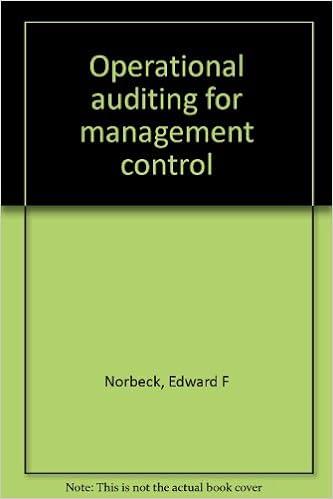Required: Read the case "Cravat Sales Company". Prepare the following budgets and schedules for the second quarter (April- June) using MS Excel. A Sales budget, by month and in total. A Schedule of expected cash collections from sales, by month and in total. A Merchandise purchases budget in units and in dollars. Show the budget by month and in total. A Schedule of expected cash disbursements for merchandise purchases by month and in total. An Operating expenses budget, by month and in total. A Schedule of expected cash disbursements for operating expenses, by month and in total. A Cash budget; Show the budget by month and in total. A Budgeted income statement for the three-month period ending June 30 (Use the contribution approach). Y You must have separate and clearly marked input and output sections. You may enter the details in the repayments and interest lines of the cash budget manually. This is because the programming skills required to perform this function are quite complicated. Apart from repayments and interest, there is to be no manual input into the Output Section. All cells are to contain formula. 7. For this project use the exact amount of borrowing. For example: Cash Deficiency (51,500) Minimum Cash Requirement 40,000 Borrowing 91.500 CRAVET SALES COMPANY You have just been hired as a management trainee by Cravat Sales Company, a nationwide distributor of a designer's silk ties. The company has an exclusive franchise on the distribution of the ties, and sales have grown so rapidly over the last few years that it has become necessary to add new members to the management team. You have been given responsibility for all planning and budgeting. Your first assignment is to prepare a master budget for the next three months, starting April 1. You are anxious to make a favourable impression on the president and have assembled the information below. The company desires a minimum ending cash balance each month of $10,000. The ties are sold to retailers for $8 each. Recent and forecasted sales in units are as follows: January (actual) 20,000 June.. 60,000 February (actual) 24,000 40,000 March (actual)... 28.000 August 36,000 April...... 35,000 September 32,000 May 45,000 July The large buildup in sales before and during June is due to Father's Day. Ending inventories are supposed to equal 90% of the next month's sales in units. The ties cost the company $5 each. Purchases are paid for as follows: 50% in the month of purchase and the remaining 50% in the following month. All sales are on credit, with no discount, and payable within 15 days. The company has found, however, that only 25% of a month's sales is collected by month-end. An additional 50% is collected in the following month, and the remaining 25% is collected in the second month following sale. Bad debts have been negligible. The company's monthly selling and administrative expenses are given below: Variable: Sales commissions $1 per tie Fixed: Wages and salaries... $22.000 Utilities. $14,000 Insurance $1.200 Depreciation Miscellaneous... $3,000 $1.500 All selling and administrative expenses are paid during the month, in cash, with the exception of depreciation and insurance expired. Land will be purchased during May for $25,000 cash. The company declares dividends of $12,000 each quarter, payable in the first month of the following quarter. The company's balance sheet at March 31 is given below: Assets $ 14,000 Cash... Accounts receivable (548,000 February sales, $168,000 March sales)....... Inventory (31,500 units)... Prepaid insurance...... Fixed assets, net of depreciation Total assets ...... 216,000 157,500 14,400 172,700 $574,600 Liabilities and Shareholders' Equity Accounts payable. Dividends payable .. Common shares... Retained earnings Total liabilities and shareholders' equity $ 85,750 12.000 300,000 176,850 $574,600 The company has an agreement with a bank that allows it to borrow at the beginning of each month, up to a total loan balance of $140,000. The interest rate on these loans is 1% per month, and for simplicity, we will assume that interest is not compounded. At the end of the quarter, the company would pay the bank all of the accumulated interest on the loan and as much of the loan as possible, while still retaining at least $10,000 in cash. Example: Financing Section Excess (Deficiency) of cash $ (20,000) $ (30,000) $ 25,000 Financing: Borrowings $ 30,000 $ 40,000 Repayments (13,300) Interest 0 ($1,700) Total Financing $30,000 $40,000 $40.000 ($15,000) Cash Balance, Ending $ 10,000 $ 10,000 $ 10,000 *30,000 x 3% +40,000 x 2%. $1,700 Clipboard Alignment Number Font fx BUDGETING EXAMPLE PROVIDED 16 x INPUT SECTION SALES (UNITS) APRIL 50,000 40,000 60,000 10.00 CASH COLLECTION PERCENTAGES Month of sale 20% Month following the sale 70% 2nd month following sale 10% MAY JUNE 7 SELLING PRICE PER UNIT OUTPUT SECTION 10 Sales Budget APRIL JUNE QUARTER 150,000 12 Budgeted sales (units) 13 Selling price per unit 14 Budgeted sales (Dollars) MAY 40,000 10.00 400,000 50,000 10.00 $ 500,000 $ 60,000 10.00 600,000 $ $ 1,500,000 16 Schedule of expected cash collections 1 QUARTER 18 April Credit sales 10 May Credit sales APRIL 100,000 $ $ MAY 350,000 80,000 500,000 400,000 $ JUNE 50,000 280,000 $ $ Paragraph Styles 1. Input Section Incomplete or incorrect input Input is not in a separate section and not clearly marked Input is complete and correct Input is in a separate section and is clearly marked 2. Output section Output section is separate and is clearly marked All formulas in the output sections are correctly linked to the input section All formulas work properly Output section is complete and correct 3. Layout and presentation Proper layout and pleasant presentation Lock function is used and is working correctly Formatting and alignment is complete and correct EXCEL SKILLS: FORMULAS, FORMATTING, ALIGNING CELL CONTENTS, WORKSHEET PROTECTION











